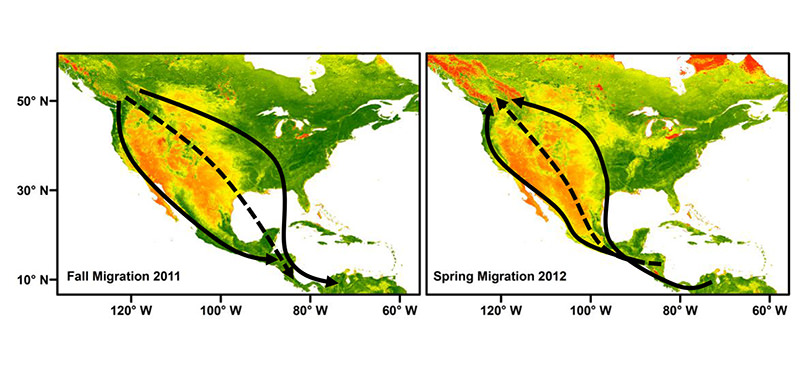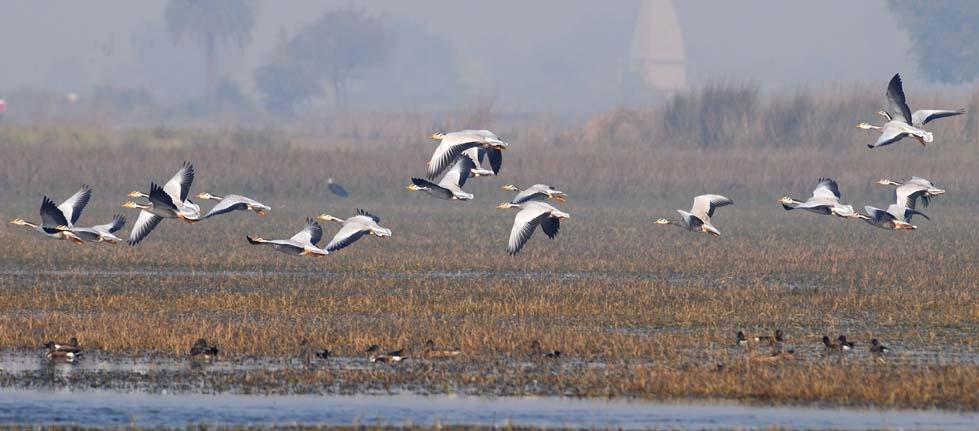On 9 and 10 May 2015 we commemorate the World Migratory Bird Day, an awareness campaign for these birds and their habitats that has been held during the second weekend of May since 2006.
To make the most of this special day, we will tell you five fun facts about migratory birds that you may not know.
1. Did you know that migratory birds have a smaller brain than resident birds?
We used to think that the birds’ brain evolved from small to large, and thus birds had a greater capacity to adapt to the environment. But recent studies have discovered that it was actually a reverse process. The brain of migratory birds evolved, getting smaller than the brain of resident birds in order to save energy and thus start their travels with greater chances.
2. Did you know that birds born to parents with different migratory routes will choose an intermediate route?
Migratory instincts are conditioned by genetics to a large extent. Although there are other influential aspects, such as orientation or learning, birds’ migratory thrust is written in their DNA and determinates the route they choose. If the genes of a bird come from two parents that used different migratory routes, the bird will choose a combination of both, a middle ground. For example, if the father used to migrate from Europe to Africa through the Strait of Gibraltar and the mother across Turkey, this bird will migrate throughout Italy.

If Parents have different migratory routes, their descendants will take a route intermediate | Image: www.culturacientifica.com
3. Do you know which is the highest-flying migratory bird?
The highest obstacle a bird can face is the Himalaya mountain range. Impossible as it may seem, there are species – like the crane – that overfly the Himalaya each year with the help of the thermal currents. However, the bird that reaches the greatest high when surpassing the mountain range is the Bar-headed Goose (Anser indicus). It is able to fly over the Himalaya in eight hours without stopping to rest while migrating from Mongolia to India. At the moment of taking flight, Bar-headed Geese consume a lot of energy, so they prefer to cross the Himalaya in one go. They consume so much energy because they flight at night, and they don’t have the help of ascending currents or winds, so all the effort is born by their own muscles.

Bar-headed Goose (Anser indicus)| Author: Koshy Koshy · Creative Commons: Attribution 2.0 Generic
4. Do you know which migratory bird can remain in the air the longest?
After an investigation during which electronic sensors were placed in six Alpine Swifts (Tachymarptis melba), scientists from the Swiss Ornithological Institute determined that this bird is able to remain aloft for over six months, exactly during their migration to Africa. It is worth noting that their vital processes, including sleeping, are carried out while flying, which is surprising even for the researches themselves.
5. Why do birds fly in a V-shape?
Humans have always wondered why some of the large migratory birds draw Vs in the sky. Aerodynamics and energy saving hold the answer.
During flight, the air current over the wings moves around at a larger speed than the current in the lower part. This provokes a lifting force that helps birds, and also planes, raise in the air. As the air in the lower part of the wing bears a greater pressure than the air in the upper part, the lower air tries to flow to the upper part at the tip of the wings, creating a vortex.
Birds take advantage of these vortices to get an additional impulse and save energy. If birds were located one after another, the lifting force would be detrimental, because the air provides a lower lifting force in the space between the two vortices formed by the wings of the precedent bird. On the contrary, the lifting force is bigger on the outside of each vortex, and by taking that position birds manage to raise with a lower effort. For this reason, many migratory birds are distributed in V-shaped flocks.
We encourage you to take advantage of this weekend by participating in some of the activities related to migratory birds that are organized around the world.
The topic of the Migratory Bird Day 2015 is “Energy – make it bird-friendly!” In this occasion they want to raise awareness about the importance of reducing and mitigating the impact of new energy technologies on migratory birds and their habitats.
Do you know any impact caused on birds by new energies nearby your city? How do you think it could be reduced?











